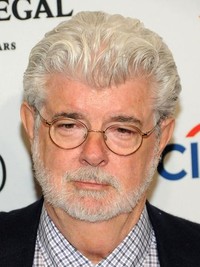George Lucas

Arguably the most important innovator cinema history, George Lucas pushed the envelope ever since his early film student days. Considered a wunderkind by his contemporaries, he initially had difficulty communicating his vision to studio executives, who did little to support "THX 1138" (1971) or "American Graffiti" (1973), his first two features. Lucas again struggled to find a studio to take a risk on his sci-fi epic "Star Wars" (1977), although its monumental triumph both set the standard for the blockbuster film and established Lucas as a titan in the industry. When he teamed with fellow boy genius Steven Spielberg on "Raiders of the Lost Ark" (1981) and its sequels, his stature was secured. In addition to overseeing the continuing adventures of Luke Skywalker in various forms, Lucas acted as executive producer on several projects throughout the 1980s and became the industry's premier innovator of theatre and film technology through his companies ILM and Lucasfilm . While merchandising from "Star Wars" continued to earn him millions, Lucas continually tinkered with the existing trilogy, often angering diehard fans. "Star Wars: Episode I - The Phantom Menace" (1999) and its two prequels ruled the box office, but fan and critical reaction was tepid. Another long-awaited project "Indiana Jones and the Kingdom of the Crystal Skull" (2008) also made money, but ultimately left viewers cold. Consequently, Lucas' legacy would be one of conflicting emotions from generations of ardent fans who simultaneously felt inspired by and betrayed by the once infallible creative genius.